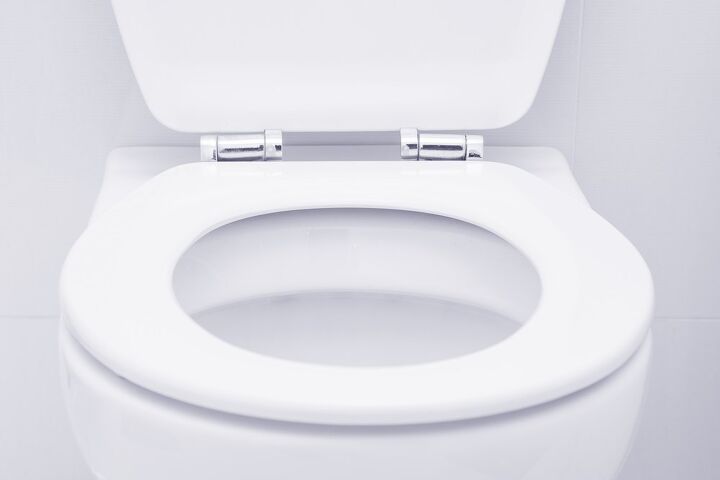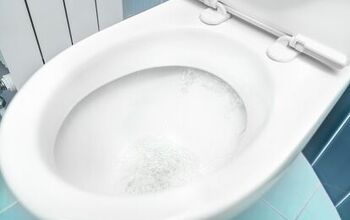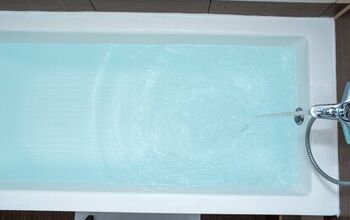Why Is My Toilet Water Yellow? (Find Out Now!)

Upon seeing yellow water in your toilet, your first instinct will probably be to flush (and be mildly annoyed at whoever forgot to flush). So, imagine your surprise when the toilet bowl fills back up and it’s still yellow! The good news is you don’t have to panic. The real reason behind your yellow toilet water is actually a lot less gross
The main causes of yellow water in your toilet comes from the presence of minerals in your toilet water or rust that builds up from the iron pipes and bolts. To clear any yellow water out of your bowl for good, you can try to clean the deposit, clean rust stains, or purchase a new pipe fitting.
The main point is you should not panic when you see yellow water in your toilet. Instead, learn a bit more about it and figure out how to resolve the issue. And that’s exactly what you’re about to do here!
Do You Need to Hire a Plumber?
Get free, zero-commitment quotes from pro contractors near you.

What Does Yellow Toilet Water Mean?
Like we said, yellow water looks gross, but it’s not really that bad. In fact, the issue can mostly be connected to minerals. These minerals can come from the water source itself as well as the pipes and fittings and rusted bolts in the tank. A little more on that before we talk about how to fix it:
Minerals in Your Water Supply
Many home water systems have hard water, which is filled with minerals like iron, magnesium, and chloride. While these aren’t necessarily harmful to you, they can get quite annoying. Over time, they will build up on your pipes and then dislodge as you flush. The presence of these minerals in your toilet will start to turn the water yellow.
Iron from Older Pipes
Some households—especially those built before the 1960s—are built with iron pipes, which easily rust over time. Additionally, many of these homes will also have old iron fittings, too. After a pipe fitting rusts, it will release tiny iron particles into the water, which will begin to discolor it.
You may think flushing can clear everything away, but it will just continue to mix fresh water in with the iron that continues to come from the rusted pipes. It’s important to note that this color may not just be yellow; it can range from a dark brown to a reddish yellow.
Rusted Bolts in the Tank
Even if your pipes are fine, an old toilet bowl can still cause yellow water. This is because they will have older bolts that may have rusted over time. These bolts can be found in the toilet tank and are most often made from iron.
Much like rust that forms in your pipes, rusted bolts can release small amounts of iron from the tank and into the bowl, effectively turning the water yellow.
How to Clear Your Toilet Water
If you want to get rid of yellow water in your toilet, simply cleaning the bowl and the pipes will not be enough. Once you figure out what is causing the yellow water in your toilet, it’ll be easier to act and fix it. Here are the first things you should try, so you can enjoy clean water once again.
Clean the Deposit
The first thing to try is to clean mineral deposits out of your tank, the side of the bowl, or in the pipes. On top of discoloring the water, these mineral buildups can cause toilet clogs, which will lead to bigger problems down the road. In most cases, these will not unclog by themselves and will continue to get bigger.
If the buildup is in the bowl or tank, all you’ll have to do is use some basic toilet cleaner and a brush to scrub it off the surface. After you’ve dislodged everything, flush a few times to see if the water clears.
Clean Rust Stains
Over time, high levels of iron can cause your toilet bowl to rust. However, it can also cause rust inside your pipes or on the toilet bolts, too. If you’re removing rust from your toilet bowl, you will need to use a soft brush and cleaners. Some of the best homemade cleaners you can choose include:
- 1-part vinegar & 1-part water in a spray bottle. Let it sit in the bowl for 30 minutes.
- 3-part baking soda & 1-part vinegar to create a paste. Leave it in the bowl for about 1 hour.
- A layer of white vinegar followed by a layer of salt. Leave it for 24 hours if possible.
- A layer of salt followed by lemon or lime juice. Let it sit for a few hours.
However, you can also try these commercial cleaners for those very stubborn stains:
- Borax
- Bar Keepers Friend®
- Iron OUT®
Purchase New Pipe Fittings
When your pipe fittings has rusted, it’s not as easy as simply cleaning them off. Instead, you should replace them. The best way to do this is to bring in a professional plumber for the job. They’ll be able to pinpoint where the rusted fitting is and will replace it without causing any more damages. Typically, plumbers will charge anywhere between $45 and $200 per hour.
Replace Old Iron Pipes
On top of getting new fittings, you may just want to replace all the iron plumbing pipes itself. This project will typically cost approximately $175 per foot of pipe. Instead of having iron, you can use PEX, PVC, copper, and more. Here’s a bit about each of those:
- PEX: PEX pipes are made out of polyethylene and is used only to supply water. It is strong enough to withstand high water pressures yet flexible enough to weave throughout the walls.
- PVC: Polyvinyl chloride (PVC) pipes are lightweight and easy to install. It is used for draining lines or vent lines.
- Copper: Rigid copper is one of the most preferred options for home water supplies because they aren’t associated with any health risks. Copper handles heat well and can stand up against intense pressures.
Get a Water Filter or Water Softener
Both water filtration systems and water softening systems function to sift large amounts of minerals out of the water supply. Water softeners specifically target magnesium and calcium, which are the most common minerals in hard water. It does this by trying to get rid of them or change their properties.
Water filtration systems, on the other hand, filters out all particles and pollutants from the water. This includes sediment, bacteria, chlorine, and more. This will make your water healthier and safer, and it will lower its overall pH level, too.
Is Yellow Toilet Water Dangerous?
The good news is yellow toilet water is not hazardous for you. This is namely because you don’t use your toilet as a source of drinking water. Plus, the most common culprit behind yellow water is iron, which is an essential nutrient in our body.
Luckily, it’s also not too dangerous for your plumbing system either. After a while, large mineral deposits will clog your toilet and cause damages to the pipes. After enough time, this can even lead to a pipe bursting. That said, yellow water on its own is not a sign of immediate danger for your plumbing system. It also won’t ruin your toilet bowl.
Related Questions
Is yellow faucet water dangerous?
It can be. If yellow water is running from the faucet, you should not drink it. The chances of you getting iron poisoning are very small, but there could be other minerals in the water that are harmful to your health.
Do You Need to Hire a Plumber?
Get free, zero-commitment quotes from pro contractors near you.

The Conclusion About Yellow Toilet Water
While having yellow water in your toilet can look unhygienic and unappealing, it is not a sign of immediate danger for you or your toilet. However, it is probably one of the first signs that something is going on inside your pipes. That said, you should want to fix the issue as soon as possible. If only because no one wants to look at yellow water!

I am a copywriter and editor based in the Las Vegas area with nearly a decade of experience under my belt writing landing pages, cost guides, blog posts, newsletters, case studies, and social media content. I have a degree in Strategic Communication and experience working in both the account and creative spheres. My goal is to always be discovering new interests and bettering myself as a writer and editor along the way.
More by Kerry Souder





















![Cost To Drill A Well [Pricing Per Foot & Cost By State]](https://cdn-fastly.upgradedhome.com/media/2023/07/31/9074980/cost-to-drill-a-well-pricing-per-foot-cost-by-state.jpg?size=350x220)





